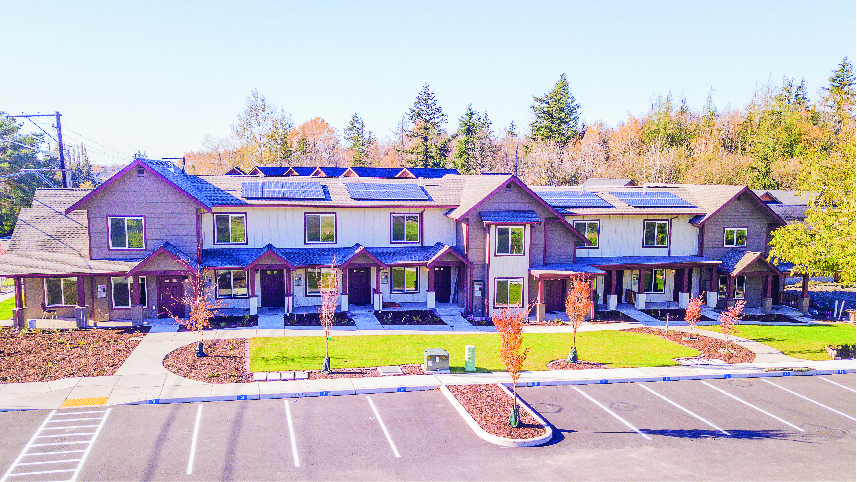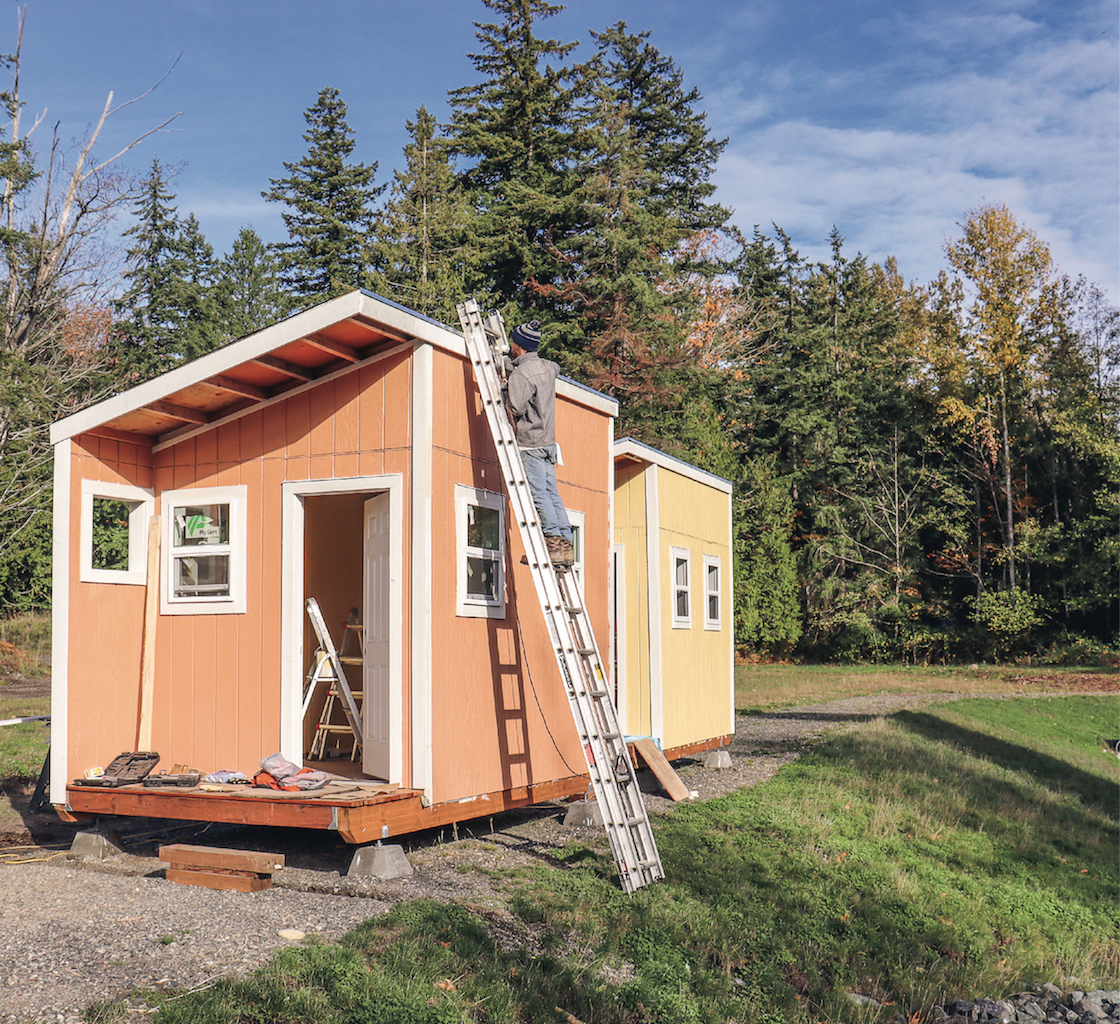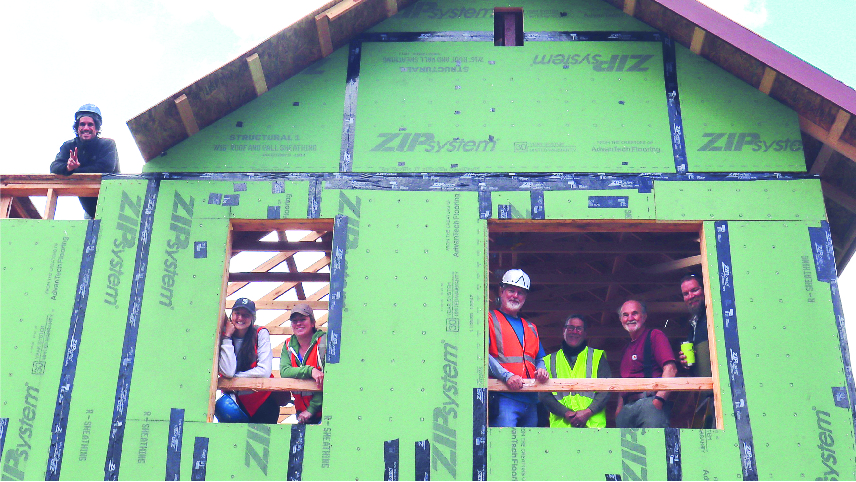Habitat Is the Largest Nonprofit Builder in the World
Editor’s Note: There are over 100 organizations in Whatcom County working to provide supportive services to those experiencing chronic poverty and its associated effects: addiction, homelessness, incarceration, mental illness, and unemployment. Whatcom Watch believes these organizations often labor unnoticed by citizens — this column is designed to add daylight to their endeavors. We have contacted the organization appearing in this column and asked them to explain their mission. Because, in challenging times, being inspired and perhaps empowered by the acts of others is more important than ever.
by Marcelo Pratesi
Habitat for Humanity was founded in 1976 based on a model of building called “Partnership Housing.” This model was developed by Clarence Jordan, a biblical scholar living just outside of Americus, Georgia, and it is still how Habitat operates today. Volunteers partner with families in need of adequate shelter to build a home. The home is sold to the family for the price of the materials used with a 0 percent mortgage. Those mortgage payments are then used to fund future Habitat homes.
Today, Habitat operates in 70 countries, and is the largest nonprofit builder in the world. What was true in a rural community in Georgia half a century ago, is true in Haiti, Kenya, Cambodia, and everywhere else — housing is a human right, and everyone, regardless of race, faith, gender, sexual orientation, or nationality, deserves a safe, decent, affordable place to call home.
In Whatcom County
Habitat for Humanity in Whatcom County was born in 1988, as a locally run and operated affiliate of Habitat for Humanity International. Since then, we have built 52 homes, and restored 12. The families in our homebuyer program are Whatcom County residents living in substandard conditions, which we define as unsafe, transitional, overcrowded, or where 30 percent or more of their income is spent on rent (today, this latter requirement seems to apply to everyone).
For the first 25 years, our Whatcom Habitat built homes the same way Habitat for Humanity always had: simple, decent, single-family homes. We built roughly a home a year on donated or inexpensive land. Over the last few years, however, three growing, and distressing challenges have changed the way we think about building shelter.
Habitat Passive Homes
Housing is a significant contributor to carbon pollution. Not only because of the techniques and materials used during construction, but the way a home is built will decide how much energy it will consume for decades into the future.
That’s why we borrowed techniques from the Passive House movement, adapted it to our own needs, and began building what we call Habitat Passive homes. There are typically four principles to our type of home design: minimized thermal bridging, triple pane windows, airtight insulation, and the use of heat recovery ventilation.
The result is a home that is incredibly well insulated, and can be warmed by the wattage it takes to power a hair dryer even on the coldest winter days. In 2013, we built our first Habitat Passive home for the Huentes family in Birch Bay.
Energy efficiency is not only inherently favorable, it also means permanent affordability for our families. Though the cost of building is higher, that cost is justified if the product is a home that produces more energy than it consumes, with a mortgage that is still cheaper than renting a two-bedroom apartment in Bellingham.

The first 8 units of the Telegraph Townhome Community. Residents started moving in this fall.
Photo by Marcelo Pratesi
Telegraph Townhome Project
Along with sustainability, the drastic rise in land prices also guided us into building more than just single-family homes. The Telegraph Townhome Project came out of our need to face these two enormous challenges at once. We could design a higher density community, build between four and eight more homes a year, and make them as energy efficient as possible.
Furthermore, we felt that the affordability of our homes should benefit more than our partner families. With the meteoric rise in land prices in Whatcom County, we as a community need to be creating permanent affordability wherever we can, if there is any hope of preserving housing opportunities for low- to middle-income families in the future.
With permanent affordability in mind, we partnered with the Kulshan Community Land Trust for the Telegraph Townhome Project. By keeping the land under the Telegraph project in a community land trust, those homes will remain affordable to whoever comes next.
Every home in the Telegraph Townhome Community will be built using Habitat Passive design, and, thanks to a grant awarded by Puget Sound Energy, we were able to partner with Western Solar to provide solar power to the first 12 units. We were also able to obtain enough panels to provide community power to the buildings through our partnership with Ecotech Solar.
By facing these challenges head-on, we can do more than build houses — we can build communities. This fall, we made an offer on a 3.46 acre lot in Everson, where we will be building commercial spaces, along with affordable townhomes. Having shops and businesses could make our Net-Zero ready, permanently affordable neighborhood, much less reliant on transportation. Our homebuyers will not only have businesses they can walk to, but job opportunities as well.
From Homelessness to Homeownership
When home prices rise beyond reach, so does rent, and the entire housing continuum is stressed. Subsidized housing is quickly taken up, and organizations like ours are overwhelmed. Homelessness is the clearest consequence of this imbalance.
The traditional Habitat for Humanity model has never been well-suited for the chronically homeless. The ability to make mortgage payments, even at 0 percent, requires a level of stability that is difficult to achieve when you don’t start every day with stable shelter. But, we know that the journey from homelessness to homeownership is possible. Some of our homebuyers have made it.

Two tiny homes that will serve as transitional shelter currently under construction at the Telegraph Townhomes site.
Photo by Ashley Winter
We also know that to make that happen, we need to provide housing first. This past year, we partnered with the nonprofit, HomesNow, and the city of Bellingham to build two tiny homes that will be transported to Unity Village, and serve as transitional housing. Building these small but durable shelters is a great way for Habitat to engage more volunteers and develop ways to build stepping stones along the housing continuum, all the way to homeownership.
Our Need
Though our methods continue to evolve based on the needs of our community, the way we work has not changed. All that we do, and how quickly we can do it, depends on volunteers. As the need for affordable housing becomes more dire, and as we expand into bigger, multifamily housing projects, our success will rely greatly on those who are willing to partner with our homebuyer families and help them build a place they can call home.
If you have never volunteered with us before, we hope you will consider it. No experience is necessary, and we provide all of the tools needed. Our build sites are open from 9 to 4 p.m., from Wednesday through Saturday. Please email volunteer@hfhwhatcom.org with any questions. We also have volunteer opportunities at events, the Habitat office, and our Habitat Store.
The Habitat Store
Donating or shopping at the Habitat Store is probably the easiest way to help bring affordable housing to Whatcom County. Located near downtown Bellingham, the Habitat Store accepts new and gently used items, such as furniture, appliances, construction supplies, clothes, hardware, and so much more. Our store is our most critical source of funding, and all of the proceeds go towards our efforts here in Whatcom. You can donate your new or gently used items at our donation dock, or by scheduling a free pickup online.
Visit us at hfhwhatcom.org to learn more about our current projects, the families we serve, and how you can get involved today in helping Whatcom families build strength, stability, and self-reliance through shelter.
____________________________
Marcelo Pratesi is the communications manager at Habitat for Humanity in Whatcom County. Originally from Brazil, he graduated from Florida State University, where he studied environmental science and human rights. He has worked for social nonprofits for the past five years.


